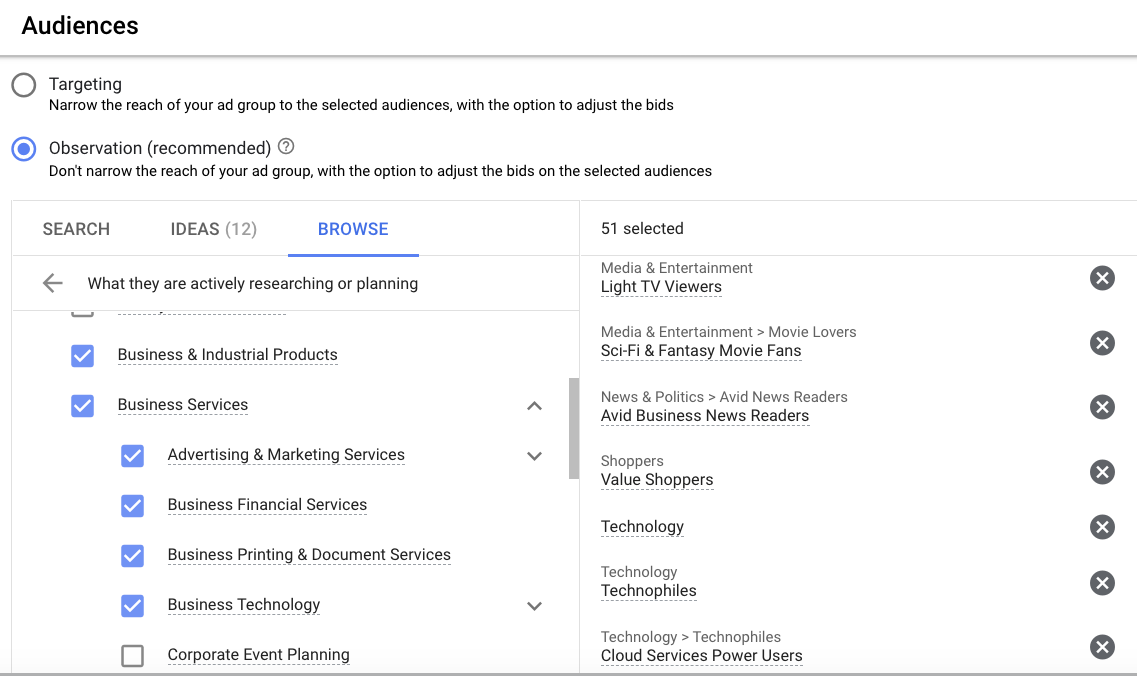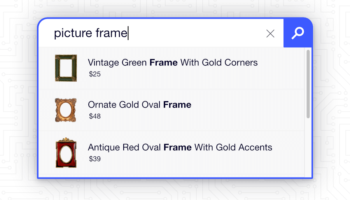As the number of paid search marketing options continues to increase, so too does the number of advertisers competing for clicks. Naturally, that increased competition leads to higher costs per click, and an even greater need for the most accurate targeting. If you’re not using audiences in your paid search campaigns, you’re missing out on valuable data that can guide your strategy.
Audience Types
The ability to narrow audiences through targeting was historically only available for Display campaigns, but this powerful option is also available for Search campaigns. The audience types currently available for Google Search campaigns are:
- Affinity
- In-market
- Detailed demographics
- Remarketing
- Customer match
- Similar audiences
This discussion will focus on affinity and in-market audiences. The in-market audience is comprised of users based on their recent purchase intent signals. The affinity audience is comprised of users based on their passions, habits, and interests. In both cases, you’re trying to reach people using search queries that will match your keywords, and ultimately trigger your ad. Understanding who exactly those users are, and their intent, will help to minimize wasted spend and result in a better return on your marketing budget.
Matching your intended customer base through audience targeting is an important step to take, and the setting you select will determine whether you are narrowing your reach or discovering your optimal targets. The available audiences for both affinity and in-market continue to grow in Google—it’s a good practice to review the options as you optimize your campaigns.

Targeting Settings
The setting options for adding an audience are “observation” or “targeting.” Observation targeting doesn’t narrow the reach of your campaign, but it allows you to monitor how ads perform with the audiences that have been selected. The data then guides the actions you can take for optimizations. Custom bids and bid adjustments can and should be utilized to take advantage of audiences that are in use.
If an audience is performing well with a high conversion rate, it would be advantageous to create a new campaign using the “targeting” setting. With all other campaign settings being equal, applying that audience with the targeting setting will narrow the reach of ads to only members of that audience. This allows for more tailored messaging in the ad copy as well.
For example, a company that sells different types of business software will have a customer base that falls into different audiences. Initial campaigns might be structured around productivity, accounting, and taxes with relevant audiences added using the observation setting. As audience data accrues and the numbers reveal where the sweet spot is, you can get more granular with a narrower reach. In-market audiences will be lower in the funnel than affinity audiences, but both should always be applied at an observational level setting to determine performance.
Layer Keywords with Audiences
The core targeting method of Search campaigns is selecting keywords relevant to your product or service that will result in qualified impressions, clicks, and ultimately conversions. The structure of campaign ad groups should be directly linked to how keywords are broken out. So no, keywords are not going away, but layering audiences with them gives you more insight when fine tuning your campaign performance.
Conclusion
Both Google and Microsoft ads offer audience targeting for Search campaigns, and they will continue to evolve as the digital advertising landscape matures. If you’re not using audiences, at least for observation, you should be. The options continue to grow, and along with them, the ability to better reach your intended targets.
If you’d like help getting your ads in front of the right audience, get in touch with Hall — we’re here to help!





